Jade Tambini (AKA B2BJade on TikTok) talks about the changing buyer, and what this means for modern B2B marketers, as well as why TikTok might not be worth your time until you’ve got the basics down first.
Powering The Global B2B Marketing Community.
B2B Marketing delivers expert-led community intelligence, events, training and resources to help marketers realise their potential and maximise business performance.

How To Choose The Perfect B2B Lead Gen Platform Partner
Live webinar: April 24 2024 | 3pm BST

How Tech Marketers are Boosting Performance
Our report looks at how tech and software marketers are boosting performance, supported by real-time date from the Propolis Community Index.

The B2B Marketing Trend Tracker 2024
What trends are we seeing from client-side and agency-side marketers?

The Propolis Community Index
A Radical Shift in B2B Marketing Metrics
Equip yourself with the right metrics to make more informed, data-driven decisions

Attend B2B Ignite 2024
Get inspired by the very latest innovation and intelligence from experts who are forging the way ahead in B2B.
EXPLORE
Latest B2B Guides and Resources


Searching for future-proofed solutions for B2B marketers
By enhancing your data strategy, you can open up future-proofed solutions to valuing the impact of your marketing channels, allowing you to streamline your marketing to the most valued channels and customers.

How to unblock your pipeline and accelerate revenue
Helen explores why indecisiveness is blocking leads and how to overcome that, the type of content that pushes your customers down the funnel, why existing customers are just as important as new ones, and much more.

B2B Martech: The Marketing Leader’s Perspective
Discover how B2B marketing leaders are leveraging martech to drive success. Learn the key strategies and tactics to help you stay ahead of the competition.
ATTEND
Year-Round Events Dedicated to Informing, Inspiring
and Connecting B2B Marketers

Celebrating the best in B2B marketing from across the US
The Elevation Awards celebrate excellence in US B2B marketing. They recognize those who are setting new standards, raising the bar, and showing the world that B2B marketing can be just as – if not more – creative and innovative than B2C.

Inspiration, innovation and intelligence for marketing-fuelled growth
Get inspired by the very latest innovation and intelligence from experts who are forging the way ahead in B2B, and be empowered to use marketing to fuel business growth.

Unlocking ABM-powered growth
The event where marketers meet and connect to get the ultimate inside track on ABM-powered growth. Take your account based marketing to new heights with a case study rich agenda delivered by the industry’s top experts.

Masters of the Arts: Be among the B2B makers & creators
The B2B Marketing Awards are internationally recognised as the gold standard for excellence in creativity and commercial effectiveness in B2B. We are now accepting submissions with a deadline of 28 June.

Harness the evolution of technology to drive marketing performance
Learn how to use tech and AI to leverage powerful data insights, enable effective collaboration, exploit the latest digital routes to market, and ultimately drive growth.

Dive into Propolis's global community of CMOs and senior marketing leaders
Uniting Propolis’s worldwide network of CMOs and senior marketing executives to exchange insights, foster idea-sharing, and engage in discussions on effectively navigating the evolving challenges facing today’s teams.

Commercial Marketer
Marketing leaders inherently understand the value they can provide businesses…
Learn more about the upcoming leader’s roundtable and register your interest below.
LEARN
Upskill your Core B2B Marketing Competencies
Through our Case Study Rich, Outcome Led Training Courses
Advanced ABM Practitioner Accreditation

Account-based marketing (ABM) is the right marketing strategy for the customers and prospects that matter most to your business. Learn how to create and execute best practice ABM plans that accelerate account-based growth.
Enquire to discuss a date for 2024.
AI Writing Fundamentals for B2B

Discover how AI writing can multiply the unique human value of your B2B marketing content, in this workshop led by B2B copywriting expert David McGuire. Focusing on key fundamentals, you’ll find use cases, spot pitfalls, and gain a clear structure for reviewing AI-generated text.
April 24 - 25 2024
2pm - 5pm BST / 9am - 12pm ET
Emerging Marketing Leaders

This programme is designed to complement your existing expertise in marketing with the skills, competences and behaviours you will need to become a marketing leader.
14 - 15 May 2024
2pm-5pm BST / 9am-12pm ET
Brand-driven Growth

Learn how to use your brand as a platform for growth with Dr. Darren Coleman; Immediately apply proven, practical tools brand-growth and templates to your organisation.
May 22 - 23 2024
2pm - 5pm BST / 9am–12pm ET
Deal-based Marketing Training

This course provides a practical overview of deal-based or pursuit marketing and how to implement it successfully from practitioners who have helped their companies to compete and win.
4th June 2024 – 25th June 2024 – 4pm BST / 11am ET / 8am PT
ABM Accreditation for Agencies

The best agency partners understand what good ABM looks like and the issues ABM-ers face in delivering it, while being clear on their own role in driving impact through account-based campaigns.
June 5 2024 - June 26 2024
4pm BST / 11am ET / 8am PT
B2B Product Marketing Training

Learn how to create B2B products and services that resonate with your target audience and outshine competitors. This comprehensive course offers practical insights and real-world strategies to elevate your product marketing game.
5 - 6 June 2024
2pm - 5pm BST / 9am - 12pm ET
B2B Copywriting Training

Learn how to write with power and confidence for the five key formats in B2B to get maximum results. Master the art of impactful copywriting with our B2B-specialised course. From crafting compelling messages to providing objective feedback, our expert-led course will equip you with the skills to succeed as a B2B marketer.
June 19 - 20 2024
2pm - 5pm GMT / 9am - 12pm ET
B2B Content Marketing Training – B2B Ignite

Join Ruth Connor at B2B Ignite and learn how to reboot your content marketing strategy. We’ll show you how to create and deliver an insight-driven B2B content marketing strategy that delivers on your marketing goals.
AI Writing Fundamentals for B2B – B2B Ignite

Discover how AI writing can multiply the unique human value of your B2B marketing content. Focusing on key fundamentals, you’ll find use cases, spot pitfalls, and gain a clear structure for reviewing AI-generated text.
ABM Essentials Training – B2B Ignite

Looking to take your marketing efforts to the next level? Account-Based Marketing (ABM) is a powerful strategy that can help organisations enhance client relationships, build their reputation, and ultimately drive growth in revenue and opportunities.
B2B Storytelling – B2B Ignite

Discover the power of B2B Storytelling Learn how to tap into emotions, build trust, and create a memorable brand image through modern storytelling techniques.
B2B Storytelling Training

Our B2B Storytelling course will teach you how to craft compelling narratives that resonate and relate to your audience to drive business results. Learn how to tap into emotions, build trust, and create a memorable brand image through modern storytelling techniques.
September 25 - 26 2024
2pm - 5pm BST / 9am - 12pm ET
ABM Essentials Training

Looking to take your marketing efforts to the next level? Account-Based Marketing (ABM) is a powerful strategy that can help organisations enhance client relationships, build their reputation, and ultimately drive growth in revenue and opportunities.
September 18 - 19 2024
2pm-5pm BST / 9am–12pm ET
B2B Copywriting Training

Learn how to write with power and confidence for the five key formats in B2B to get maximum results. Master the art of impactful copywriting with our B2B-specialised course. From crafting compelling messages to providing objective feedback, our expert-led course will equip you with the skills to succeed as a B2B marketer.
October 9 - 10 2024
2pm - 5pm GMT / 9am - 12pm ET
B2B Content Marketing Training

Does your B2B Content Marketing marketing strategy need a content reboot? We’ll show you how to create and deliver an insight-driven B2B content marketing strategy that delivers on your marketing goals.
October 16 - 17 2024
2pm-5pm BST / 9am–12pm ET
Emerging Marketing Leaders

This programme is designed to complement your existing expertise in marketing with the skills, competences and behaviours you will need to become a marketing leader.
22 - 23 October 2024
2pm-5pm BST / 9am-12pm ET
AI Writing Fundamentals Training Course

Discover how AI writing can multiply the unique human value of your B2B marketing content, in this workshop led by B2B copywriting expert David McGuire. Focusing on key fundamentals, you’ll find use cases, spot pitfalls, and gain a clear structure for reviewing AI-generated text.
November 20-21 2024
2pm - 5pm GMT / 9am - 12pm ET
Opt in to hear about our latest insights, events, training and partner updates.
Sign up to Propolis Intelligence and News Updates
Be first with the latest Propolis intelligence, events and resources.
Sign up to B2B Marketing Events and Training Course Updates
Keep up to date with our upcoming conferences, training and awards.
Sign up to B2B Marketing Guides, Resources and Webinar Updates
Discover the latest resources and webinars from B2B Marketing and our partners.
Our locations:
US Office
- Chicago, Illinois, USA
- Email: info@b2bmarketing.net
- Tel: +1 (313) 371 2643
Europe Office
- London, United Kingdom
- Email: info@b2bmarketing.net
- Tel: +44 (0) 20 7014 4920























